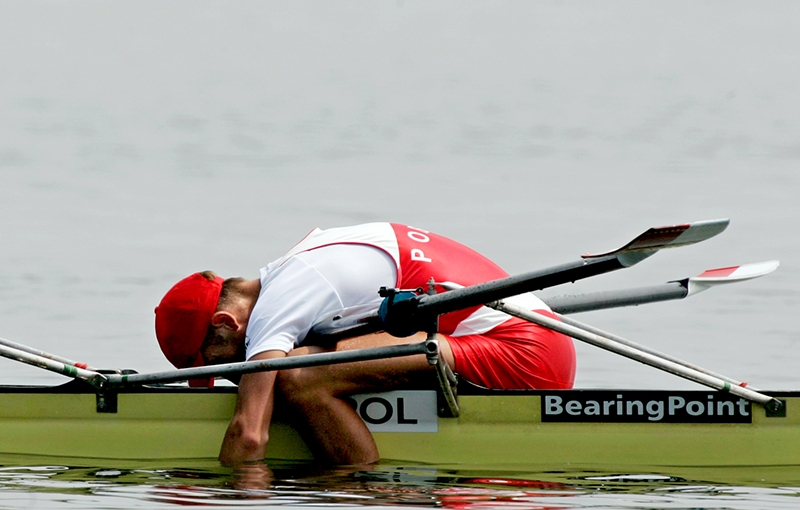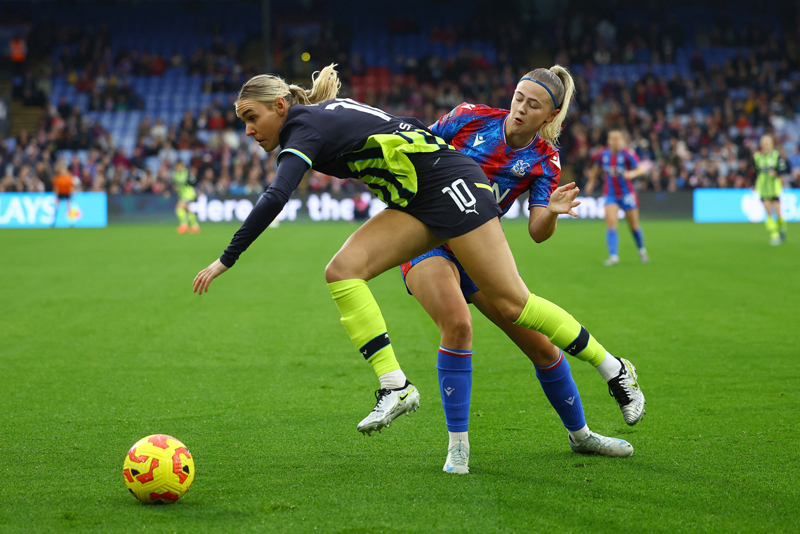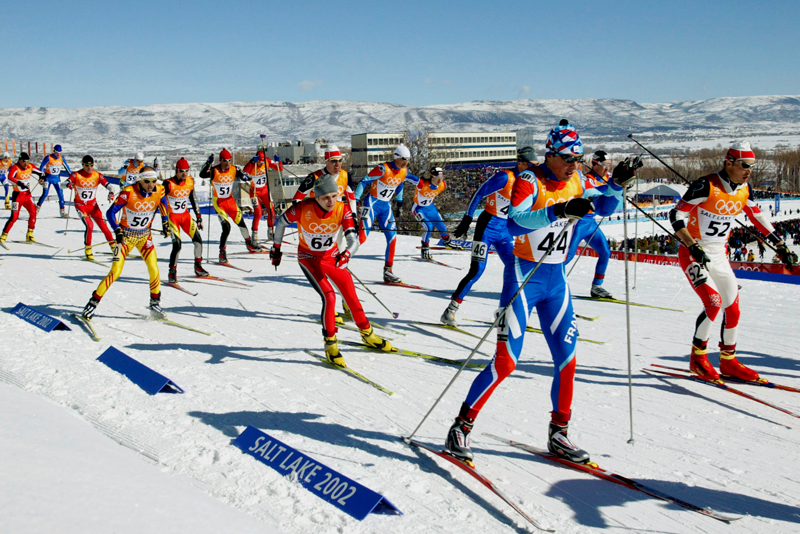You are viewing 1 of your 1 free articles. For unlimited access take a risk-free trial
Recovery: does the way you feel matter more than measurements?
 New research suggests that subjective measures of mood and physical fatigue may be even more important for athletes than objective measures such as heart rate and lactate data
New research suggests that subjective measures of mood and physical fatigue may be even more important for athletes than objective measures such as heart rate and lactate data
Rest and recovery are crucial if maximum adaptation is to follow from training. It’s in the time when you are not training - ie resting - when all those gains made from pushing hard will be made physiologically. These include muscle fibres, which become more enduring and able to process more oxygen, and the adaptations to high-intensity anaerobic training that boosts VO2max, lactate threshold and performance economy. Knowing when you are recovered, rested and able to train as the ‘right intensity at the right time will provide huge training dividends constantly over time.At the upper echelons of sport, investment in ensuring optimum recovery is becoming ever greater. The US Olympic Training Centre and The Australian Institute of Sport all have designated recovery facilities at their respective facilities. Indeed, rest and recovery are key training variables in much the same way as load, intensity and volume are. These two R’s need to be factored into a training plan - in the same way as weekly mileage and training intensity (volume and intensity) are.
Many elite athletes have active recovery days and/or complete rest days, in their schedules. A recovery day may include, for example, massage, low intensity CV work, cross-training, cryotherapy, and many other means of recovery practices. But how do you know when you should be easing back on training, whether you are primed for adaptation or not, or whether your year-on-year training is doing a progressively good job or actually setting you back?
Subjective vs. objective measures
As indicated there are two distinct approaches to measure rest and recovery – these being objective and subjective. Objective measures include procedures such as endocrine system monitoring and in-session, heart rate and lactate monitoring. Subjective methods involve specifically-designed questionnaires that analyse sleep, desire and relaxed state, for example. These are collectively known as mood state questionnaires.It should be remembered that recovery does only entail physical recovery. The psychological stress created by tough training periods, and in particular competition, needs to be carefully monitored. The athlete’s mental state will have a huge effect on how successful their training and competitive efforts are. It also has to be said that recovery is very much an individual measure, with some athletes being able to handle more intense training loads and competitions than others. Hence, recovery will vary between individuals and needs to be considered accordingly.
Subjective measures
Numerous questionnaire types fall into this category. These are designed to assess mood state, recovery and feelings of well-being. Examples include, the Profile of Mood States (POMS) and Recovery Stress Questionnaire for Athletes (RESTQ-sport), whist others consider physical output, for example, perceived exertion (RPE).Many of you reading article this will have used RPE as a subjective, immediate and highly usable way to measure exercise intensity. The modified Borg scale often used (see figure 1), runs from 1-10, where 10 is flat out, highly taxing exercise. Much research indicates that RPE can be as effective as objective and more evasive means of physiological measurement(1). Although this establishes credibility for a subjective measure it does not necessarily provide a method of cutting off overtraining – or more simply knowing when to ease back and rest. However, what it does offer is a way to analyse training real time - one that takes specific account of how you feel.
Figure 1: Modified Borg scale

Not all sessions when performed at the same percentage of heart rate max, for example, will feel the same. The human ‘uniqueness’ element has a huge role to play. One day, the ‘same’ session may feel much easier than another, despite the fact that heart rate zone requirements are identical. And this is where RPE can play a part. If you are consistent in the way that you interpret your RPE, the likelihood is that you can control your session against that (and heart rate), and the planned- for session outcomes will result.
For example, a session that elicits a 14-16 RPE always does, irrespective of heart rate. When you’re feeling good, that 14-16 RPE will match the set heart rate zone for the session, but when you’re not then you’ll still be working at the same RPE, but potentially at a lower heart rate. This provides an example of how a subjective measure of effort can potentially better control overall training stress and load than objective ones. The consistency of your RPE monitoring will potentially prevent you going into the ‘red zone’, when not required from specific training sessions, and allow for training to be consistent with the end result being a level of stress that optimises adaptation.
Mood state measures
The Profile of Mood States (POMS) is commonly used as an assessor of recovery and training. It has 65 areas for analysis and, for example, considers mood states, such as anger, confusion, depression, fatigue, tension and vigour. The Multicomponent Training Distress Scale (MTDS) is a more recent addition to subjective assessment, and has therefore been subject to less research. It is less involved than the RESTQ-Sport questionnaire but research has identified its value(2).As a related aside, the very involved nature of some of the subjective mood states questionnaires can make them difficult to regularly administer and it’s often for this reason that coaches, for example, have developed/adapted their own methodologies – more on whether this is a good idea later.
The RESTQ-sport is a commonly used evaluative subjective measure and it’s been more widely evaluated than POMS and MTDS. It has been shown to be able to identify potential overtraining and accumulated stress, as well as potentially enabling athletes to take control. The RESTQ-sport comprises of:
- Seven general stress scales - general stress, emotional stress, social stress, conflicts/pressure, fatigue, lack of energy, physical complaints.
- Five general recovery scales - success, social recovery, physical recovery, general wellbeing, and sleep quality
- Three sport‐specific stress scales - disturbed breaks, emotional exhaustion, injury.
- Four sports specific recovery scales - being in shape, personal accomplishment and self-efficacy, self-regulation.
Researchers looked at the effectiveness of the RESTQ-sport and the MTDS for evaluating swimmers’ recovery from training stress(4). Twenty-one national-level youth swimmers were evaluated over eight weeks. After a specific workout once a week the RESTQ-sport was administered (and the MTDS). At the end of the eight-week intervention the researchers had enough corroboratory evidence to conclude: “The findings of the current study suggest that both the REST-Q Sport and the MTDS have the capacity to predict performance of a range of fitness components associated with swimming.”
Another study evaluated the RESTQ-sport (and a number of other similar questionnaires, such as the Depression, Anxiety and Stress Questionnaire and the Perceived Stress questionnaire(5). This study looked specifically at the prevalence of illness symptoms, poor sleep and low energy in the lead up the 2016 Rio Olympics. Three-hundred-and-seventeen athletes from 11 sports took part in the three-month long study. It turned out that the RESTQ-sport questionnaire identified that the main factor behind an incidence of illness was a combination of anxiety and stress recovery states. Thus it could be argued that had the RESTQ-sport been a regular part of the Olympic athletes’ recovery monitoring, potential illness could have been avoided (by adjusting training loads accordingly).
Direct comparison of subjective and objective measures
We have seen that there is evidence supporting the use of subjective means, such as the RESTQ-sport, for potentially evaluating and adjusting training load. However, how do they actually compare with objective measures, such as in-session heart rate monitoring, endocrine system analysis and blood lactate level monitoring? One very interesting piece of research attempted to compare like for like 6).Researchers conducted a review of subjective and objective recovery testing measures – specifically, mood state questionnaires and objective endocrine system and in-session lactate monitoring. They attempted to compare what athletes self-reported with the actual physical symptoms of recovery or lack of recovery. It’s beyond the scope of this article to go into great detail but essentially, the subjective monitoring scored very highly against the objective measures. As the researchers stated: “Subjective measures were more sensitive and consistent than objective measures in 22 of the 54 studies. Objective measures were generally unresponsive to acute changes in training load.”
Reliability of mood state questionnaires
Obviously to get meaningful results, any test must be reliable. It’s for this reason that sports scientists prefer the use of rigorously tested mood state questionnaires and not those created “more on the spot” by coaches. Results indicate that athletes’ responses to mood state questionnaires such as the RESTQ-sport become more reliable with familiarity, Additionally, they have validity built into them via cross-referencing with other measures. An example, in the RESTQ-sport would be, whether answers reflected changes to competition cycles, training loadings, performance. Further practical validity is also developed by rigorous refinement of the questionnaires. For example, the REST-Q started out with 86 items for profile and eventually progressed into the RESTQ-sport with 36.The environment in which mood state questionnaire are administered is also crucial. The questionnaires obviously need to be taken seriously by the athletes, coaching and support staff, and the findings equally rigorously interpreted and implemented. The follow-up needs to be systematic. Specifically, trained staff should be involved; for example, a sports psychologist may be needed to specifically deal with some of the outcomes. Various statistical measures are used to ensure reliability i.e. standard deviation ranges. In addition to looking for changes it may also be as important to look for why there are no changes, when perhaps training loads, training camps and competition stress have been increased.
In conclusion
There are limitations with subjective measures of recovery and adaptation to training (just as there are with objective ones, especially when the human element is not factored in). However, they do offer coaches a way to evaluate how an athlete is ‘feeling at a particular point in time. If the questionnaire is administered consistently over the training period and as training years pass, then the data obtained can shape programming and deal with individual variations too in terms of stress and adaptation. An analysis which may enable the coach to determine whether the athlete is entering an overtraining state and whether progression of training load is suitable. Considering an athlete’s mood state will provide coaches with a further way to achieve peak performance. Much sports science treats athletes as machines; however, subjective mood state questionnaires can add rigour to that most subjective element of performance, “How we feel”!References
- J Strength Cond Res.2012 Aug;26(8):2249-57.
- Medicine and Science in Sports and Exercise 49 Iss. 5S (2017) p. 575 ISSN: 0195-9131
- Res Sports Med. 2016 Jul-Sep;24(3):269-80
- Br J Sports 2018 Jan;52(1):47-53
- Br J Sports 2018 Jan;52(1):47-53
- Br J Sports Med 2016;50:281-291
Newsletter Sign Up
Testimonials
Dr. Alexandra Fandetti-Robin, Back & Body Chiropractic
Elspeth Cowell MSCh DpodM SRCh HCPC reg
William Hunter, Nuffield Health
Newsletter Sign Up
Coaches Testimonials
Dr. Alexandra Fandetti-Robin, Back & Body Chiropractic
Elspeth Cowell MSCh DpodM SRCh HCPC reg
William Hunter, Nuffield Health
Keep up with latest sports science research and apply it to maximize performance
Today you have the chance to join a group of athletes, and sports coaches/trainers who all have something special in common...
They use the latest research to improve performance for themselves and their clients - both athletes and sports teams - with help from global specialists in the fields of sports science, sports medicine and sports psychology.
They do this by reading Sports Performance Bulletin, an easy-to-digest but serious-minded journal dedicated to high performance sports. SPB offers a wealth of information and insight into the latest research, in an easily-accessible and understood format, along with a wealth of practical recommendations.
*includes 3 coaching manuals
Get Inspired
All the latest techniques and approaches
Sports Performance Bulletin helps dedicated endurance athletes improve their performance. Sense-checking the latest sports science research, and sourcing evidence and case studies to support findings, Sports Performance Bulletin turns proven insights into easily digestible practical advice. Supporting athletes, coaches and professionals who wish to ensure their guidance and programmes are kept right up to date and based on credible science.












